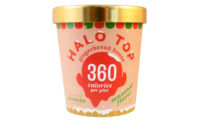
Processors want caps and closures for their product packaging that are reliable, enhance line efficiency and don’t cost a lot of money.
Consumers want products with caps and closures that ensure food safety, are easy to open and don’t cost a lot of money.
Faced with a common thread amid a turbulent economy, manufacturers of caps and closures for dairy packaging are coming up with new, innovative ways to meet everyone’s demands. Several suppliers shared their insights with us on the current market for caps and closures.
DFR: What are dairy processors looking for in their caps and closures? What feedback are you getting from customers regarding what their consumers are demanding from product packaging?
Ron Giordano, president and chief executive officer, H.S. Crocker Co.: The difficulty with gathering some of the information today is due in part to the overall economic environment. Many are concentrating on their operations and how to maintain a profitable bottom line. This is without a doubt a concern that every processing plant has in its day-to-day operations. They want material coming in their door ready to be used without defect and need for reinspection in their plant. Time is much too valuable for this to happen.
Scott Larson, vice president of sales, LMI Packaging Solutions: Seal integrity in the interface of the lid to cup is critical to protect against product leakage and spoilage during shipping and handling as well as provide consumers with assurances of package safety and security. High-quality graphics with short, flexible lead times for processors to react to unexpected demand. Strong yet cost-effective materials that withstand the rigors of packing, shipping and handling with minimal secondary packaging protection. Environmentally responsible material options.
Consumers continue to demand packaging that offers convenience in a safe and secure package, including a secure yet easily peelable lid; a puncture- and tear-resistant material that conveniently removes in one piece.
Jay Martin, vice president of operations, IPEC: One of the largest areas of feedback that we continue to hear about in the industry is ease of use. With an aging U.S. population and a large percentage of children opening fluid milk containers for their breakfast, the focus on ease of removal continues to become more prevalent. With the fluid milk landscape becoming more competitive, we have seen many customers focus on industry-staple closures that are the least expensive and require the least capital investments. Other accounts have taken the approach that they want to offer a more premium package to better market their product, with the intention of up-selling and taking market share that way.
Roy Robinson, vice president of strategic marketing, Portola Packaging: Over the past four years or so, we have seen a distinct trend toward screw caps replacing the traditional snap caps. Consumers prefer the easy opening and easy reseal of a screw cap. Consumers were also definitive about eliminating foil seals – hard to open.
DFR: What new food safety issues have arisen regarding dairy packaging? What other special needs have arisen as processors seek to streamline operations and improve efficiencies?
Larson: There is increasing demand for enhanced product inspection, including metal detection of sealed packages. There is increasing focus on materials for filling applications that reduce downtime and perform with consistent repeatability. Processors are demanding materials that help support quick changeovers regardless of product type or package requirements. Material options must withstand the rigors of downstream packaging, transportation and handling with minimal secondary packaging protection.
Martin: The use of drop-lock design closures continues to grow in the dairy industry as processors become more focused on tamper evidence and consumer confidence. Dairies continue to focus on light-weighted packages and higher line speeds with less scrap. Closures utilizing new technology and more flexible resins provide for a more forgiving closure when applied under various temperature/humidity conditions.
Robinson: Tamper-evidence requirements were recently reviewed and reemphasized by the FDA requiring some closure products to be re-engineered. Dairy bottle light-weighting increased the need for improved seal performance between bottle and closure, which meant better closure performance and a more robust neck finish.
DFR: What new technologies have been developed to meet these needs?
Giordano: Many of the new technologies that we have seen are either proprietary or still in the testing stages. I do believe that after the first of the year, and also dependant on the economic situation, they will be more visible.
Larson: LMI’s Eco-Lid, the dairy industry’s first all-plastic lid, was developed for puncture and tear resistance; improved graphic presentation; lighter-weight material that saves 20% in freight costs; and compatibility with metal-detection equipment.
Plastic lidding material reduces energy costs by sealing at lower temperatures while increasing the life of expensive heat-sensitive equipment components. The production of all-plastic lidding material consumes 28% less energy compared to a comparable aluminum foil lid.
Martin: IPEC offers our ISO (IPEC Screw On) closure that has had great success at accounts that needed a more forgiving closure as a solution to the inconsistency in efficiencies that they were experiencing as bottle dimensions and equipment set ups varied, which can never be 100% controlled. We have seen particular success in areas where there are dramatic seasonal changes which can affect the way some of the industry closures perform on HDPE bottles.
Robinson: Our 38mm DBJ plug-style screw cap was introduced about three years ago, and we now have about 2 billion units of capacity. It features our J band for maximum tamper evidence, and it’s probably the most successful launch of a new product in the dairy industry. Alpha 5 is not far behind with a very large customer base – this is our tear-tab closure.
The SCIII is the two-piece ring-pull fitment for 38mm bottles that replaces foil seals. Our consumer research shows it’s preferred by 70% to foil. The fourth is our SCII with a new J band added to it. We call it the SCJ, and it was developed because of increasing demand and requirements for tamper evidence. All are positioned to provide our customers with the maximum in consumer convenience without sacrificing safety or tamper evidence.
Dairies also are looking to add value to products, so we developed a double-wall dispensing cap for Shamrock Farms coffee creamer.
DFR: How are rising costs impacting development of closures for dairy?
Giordano: The uncertainty is even greater as resins have fallen in price as has foil, but if the primary suppliers do not increase their supply of these materials then we will not see the drop that we should. This leaves dairy in a very difficult position.
Larson: Rising raw-material costs demand that LMI and its processor partners continually evaluate and qualify lower-cost alternatives, e.g. down-gauging material without compromising the integrity of the package.
Martin: The focus has become much more than just product weight. Over the past year, manufacturers have experienced increases in the electricity market, raw material costs and transportation costs, as well as equipment costs rising and lending markets for new equipment tightening. Efficiency has become a higher priority than ever. Tie this in with sustainability initiatives and it is evident why plants have a renewed focus on preventative maintenance, continued in-house training and a more comprehensive approach to overall line performance and scrap reduction.
Robinson: The crateless dairy bottle created by Superior Dairy and Creative Edge is a great example of reducing the overall carbon footprint of the current dairy package. Eliminating the dairy crate, shipping more bottles per truck and less handling mean less fuel, fewer emissions and lower overall costs.
DFR: What’s the next phase of technological development for caps and closures?
Giordano: I believe the next phase will be more originated to sustainable and renewable product closures that are in concert with the environment and offer lower costs. The phasing in of these new products can be adapted to the existing equipment.
Larson: Development of the next generation of flexible lidding materials will likely be in the area of sustainability including improved recyclability, compostability and biodegradability. LMI’s commitment to its processor partners is to deliver quantifiable value to their bottom line regardless of the material selected or the product packaged.
Martin: IPEC’s focus is on the quality of the finished package that dairies send to their customers. In order to achieve that goal, it requires us to be fully staffed to support our customers’ blow-mold operations, for internal or external bottle production, as well as to focus on our customers’ fillers and capping systems. This commitment is what IPEC offers to ensure a consistent quality package running at the most efficient rates possible.
Of course, pricing is very important, but saving 3% on a bottle cap that only costs a penny pales in comparison with what we can achieve with a 3% reduction in the total finished product scrap or increasing the overall plant output with no additional capital expenditures by 3%.
Robinson: As more and more dairy companies look to ESL and aseptic filling systems, cap and closure performance requirements will increase. Sterilization of closures is important as well as seal and tamper evidence requirements.
EXTRAS
H.S. Crocker Co. www.hscrocker.com
IPEC (International Plastics and Equipment Corp.) www.ipec.com
LMI Packaging Solutions www.lmipackaging.com
Portola Packaging www.portpack.com


